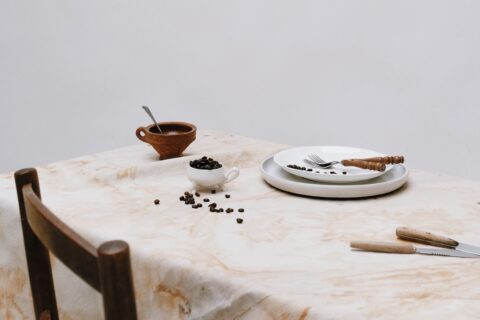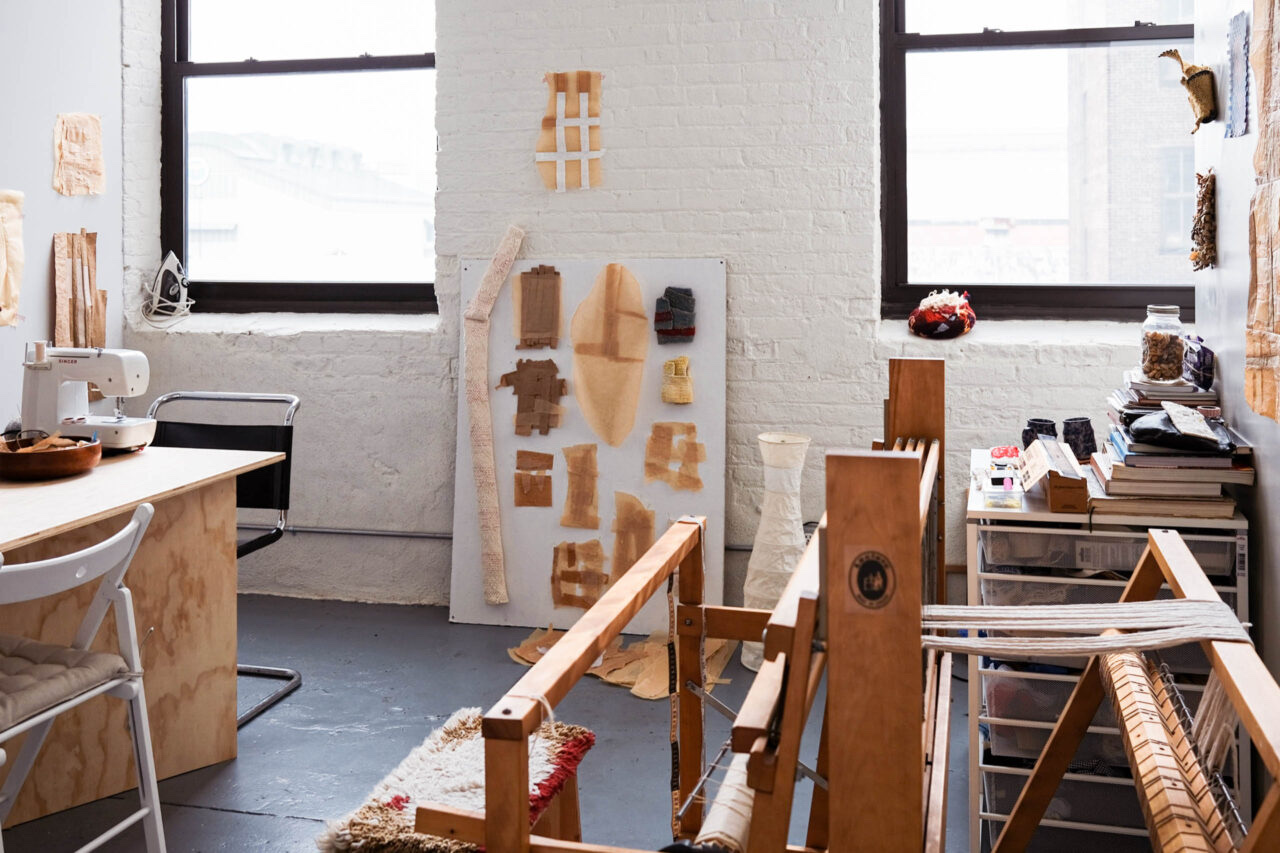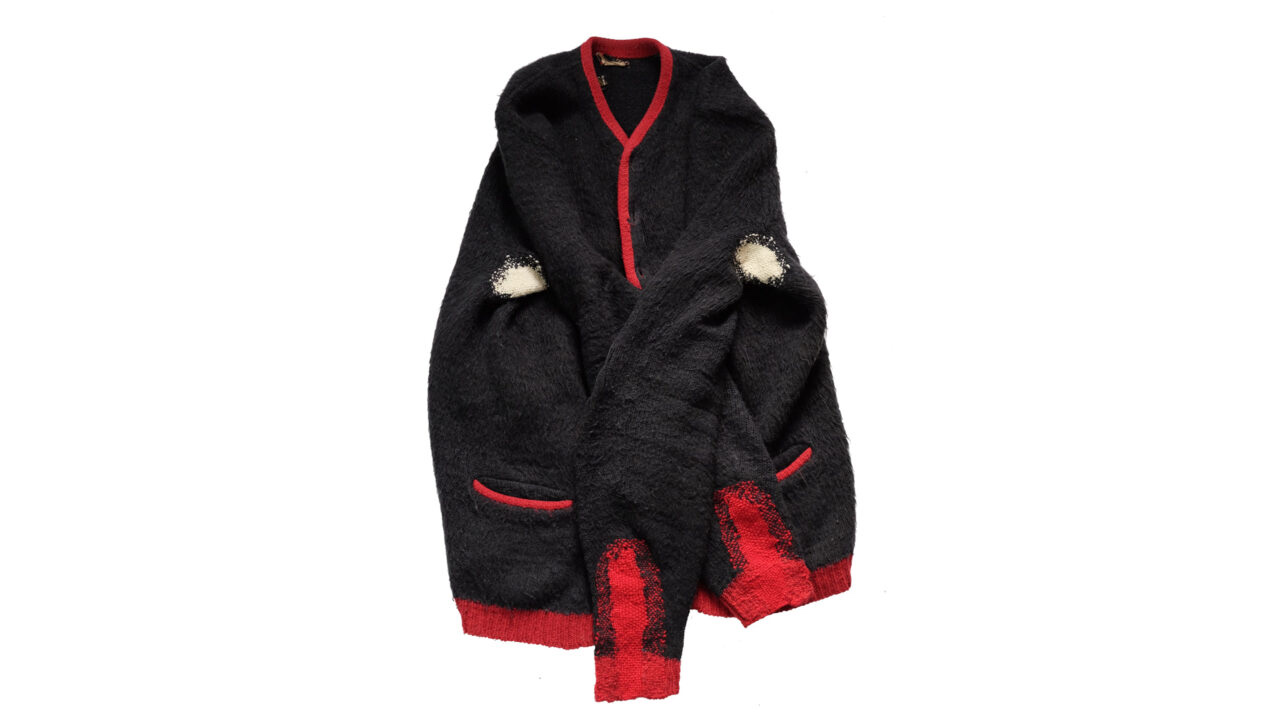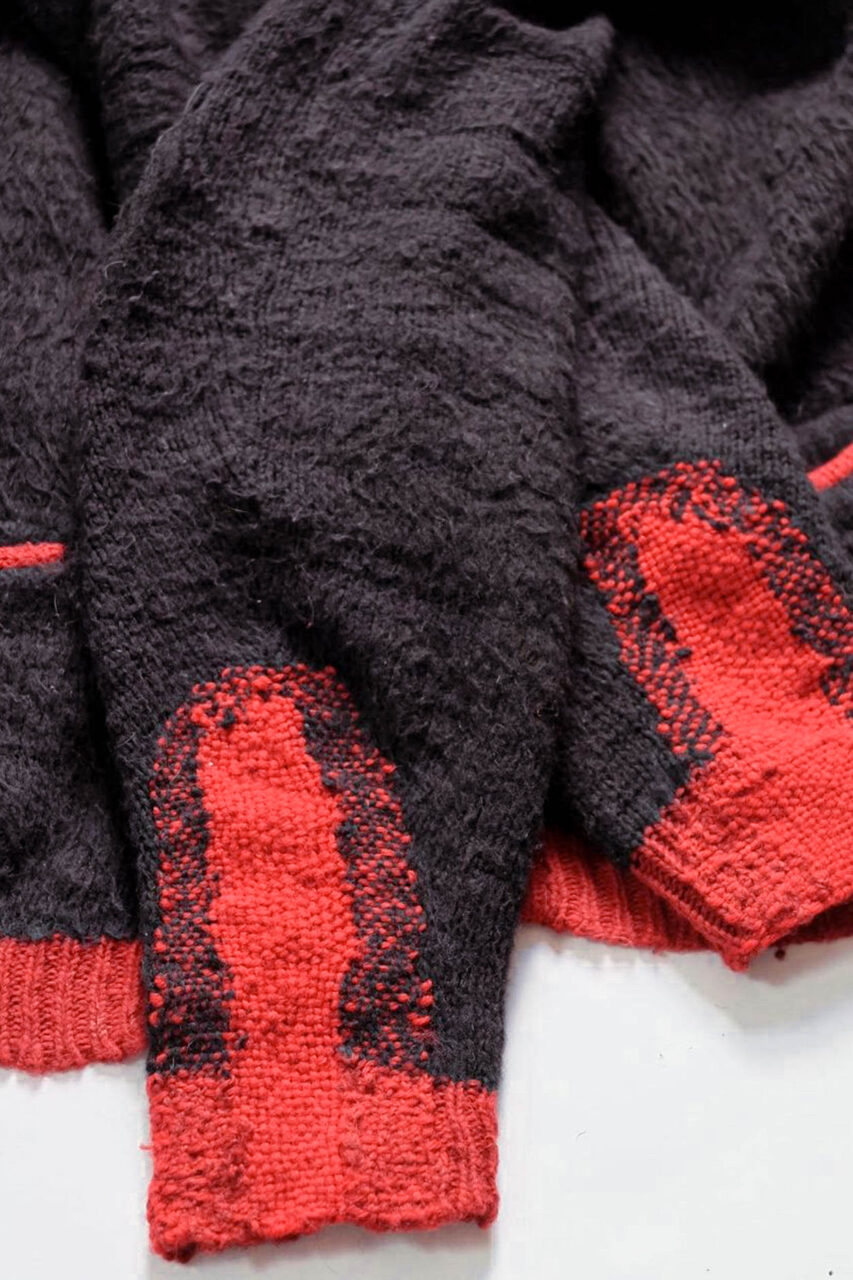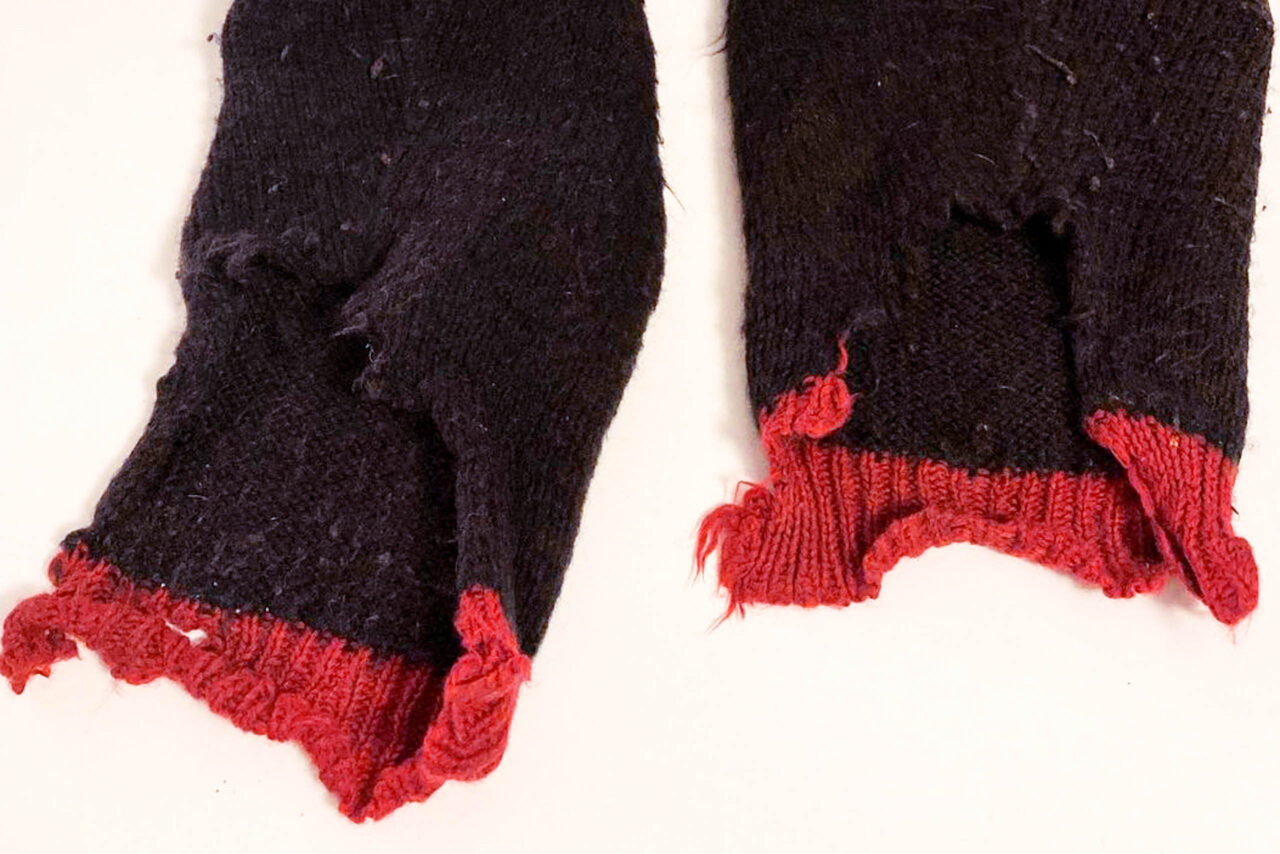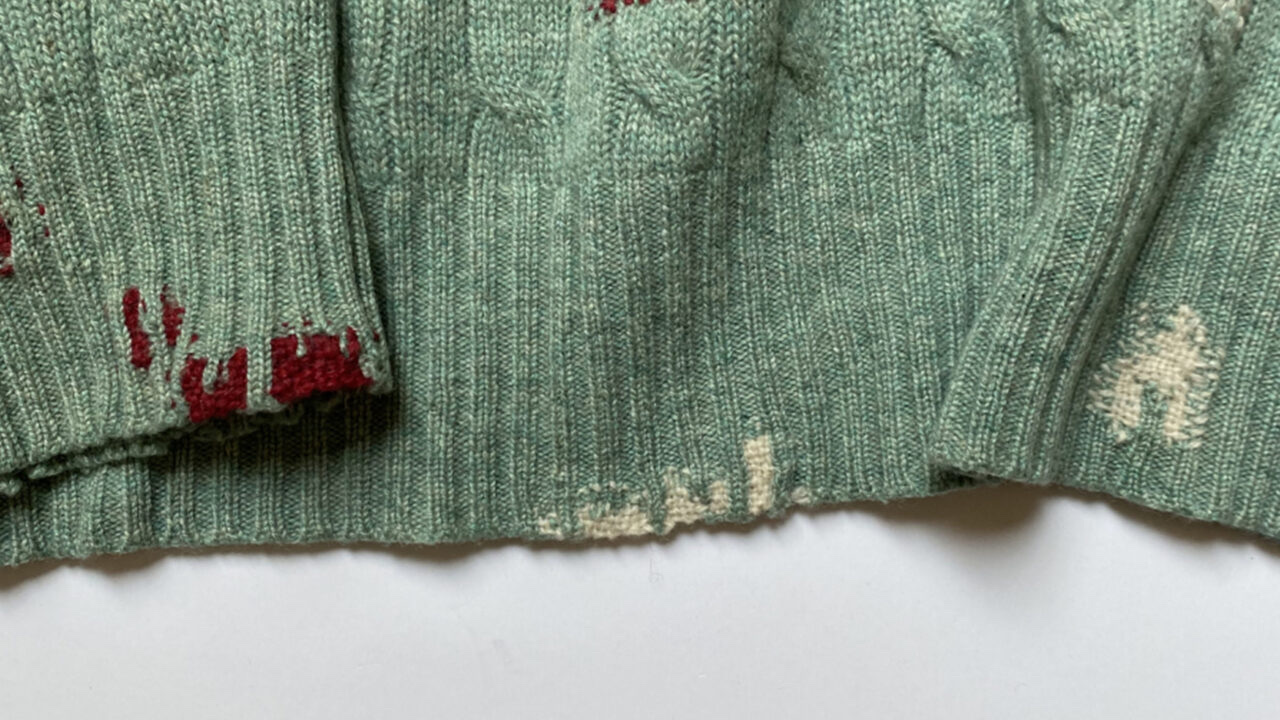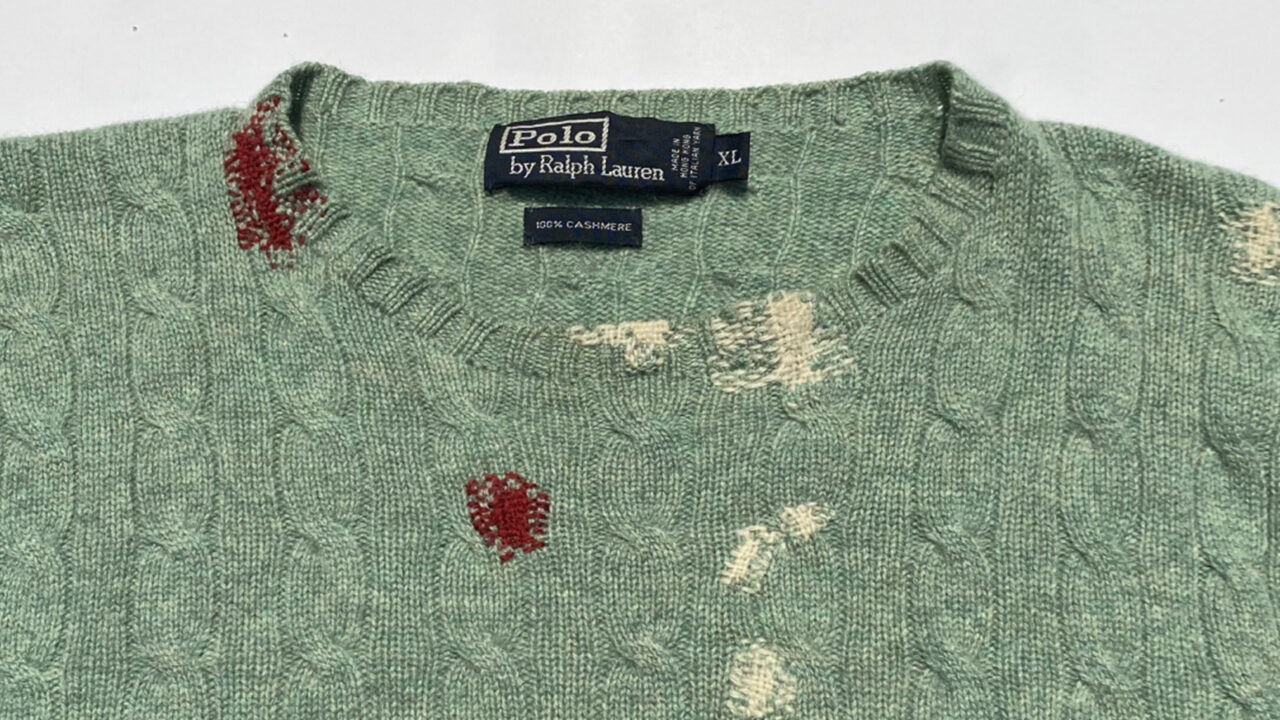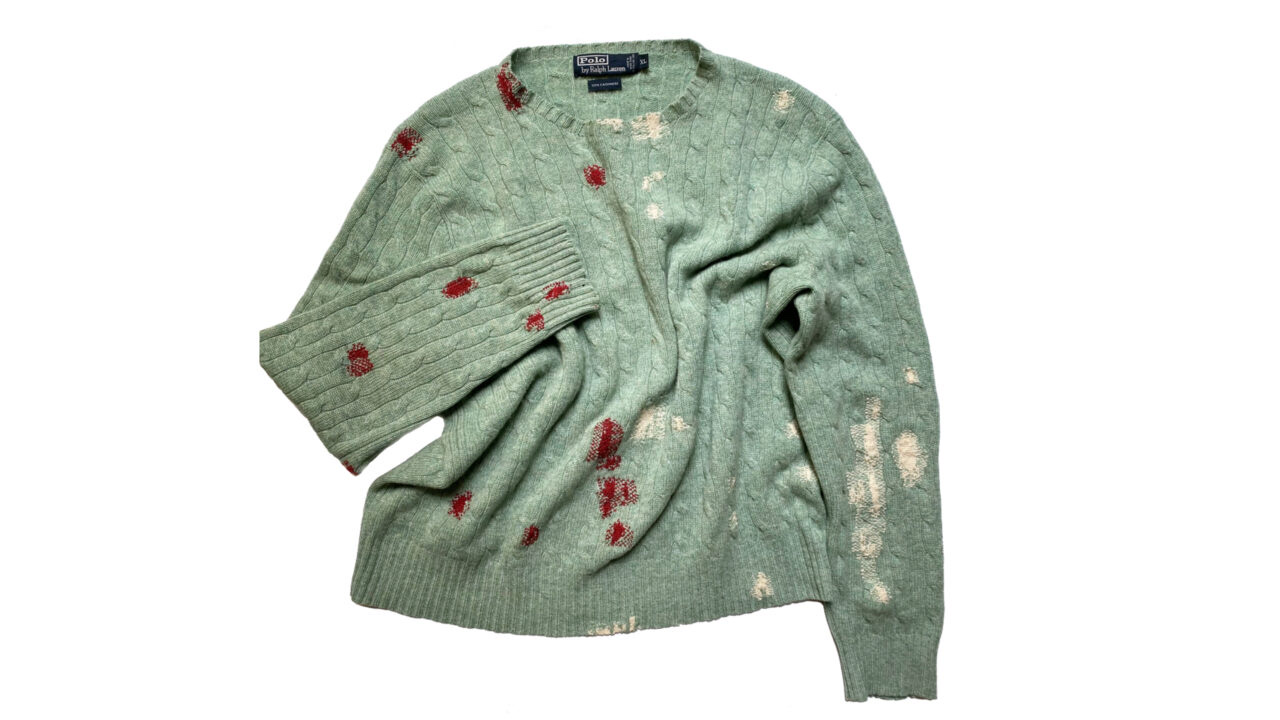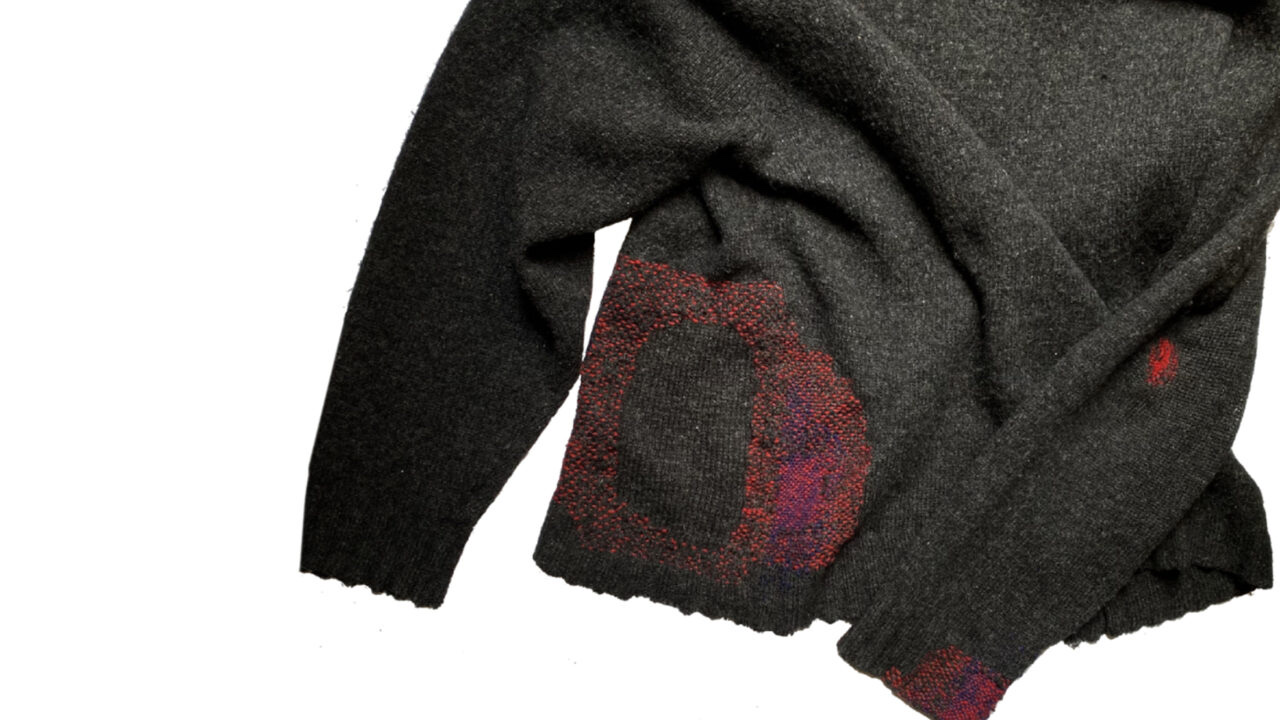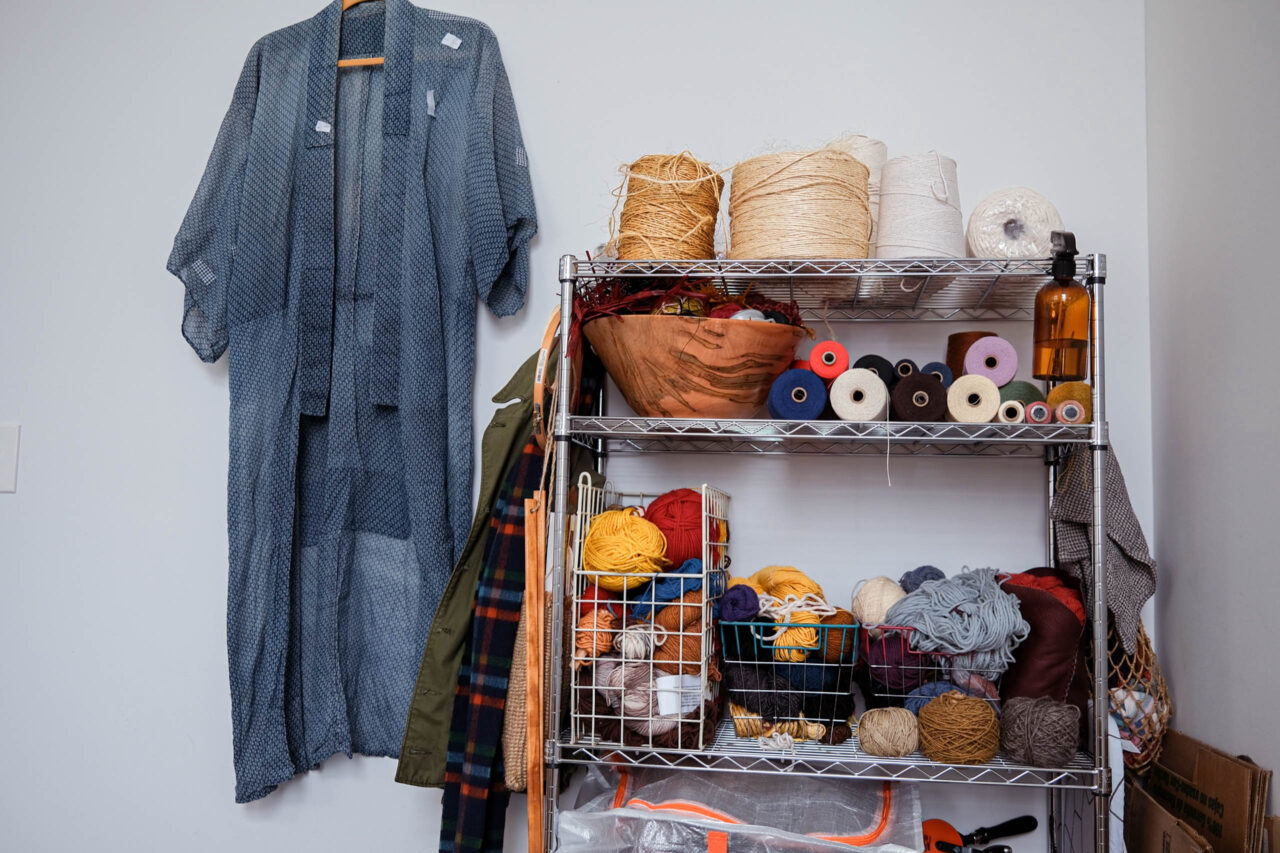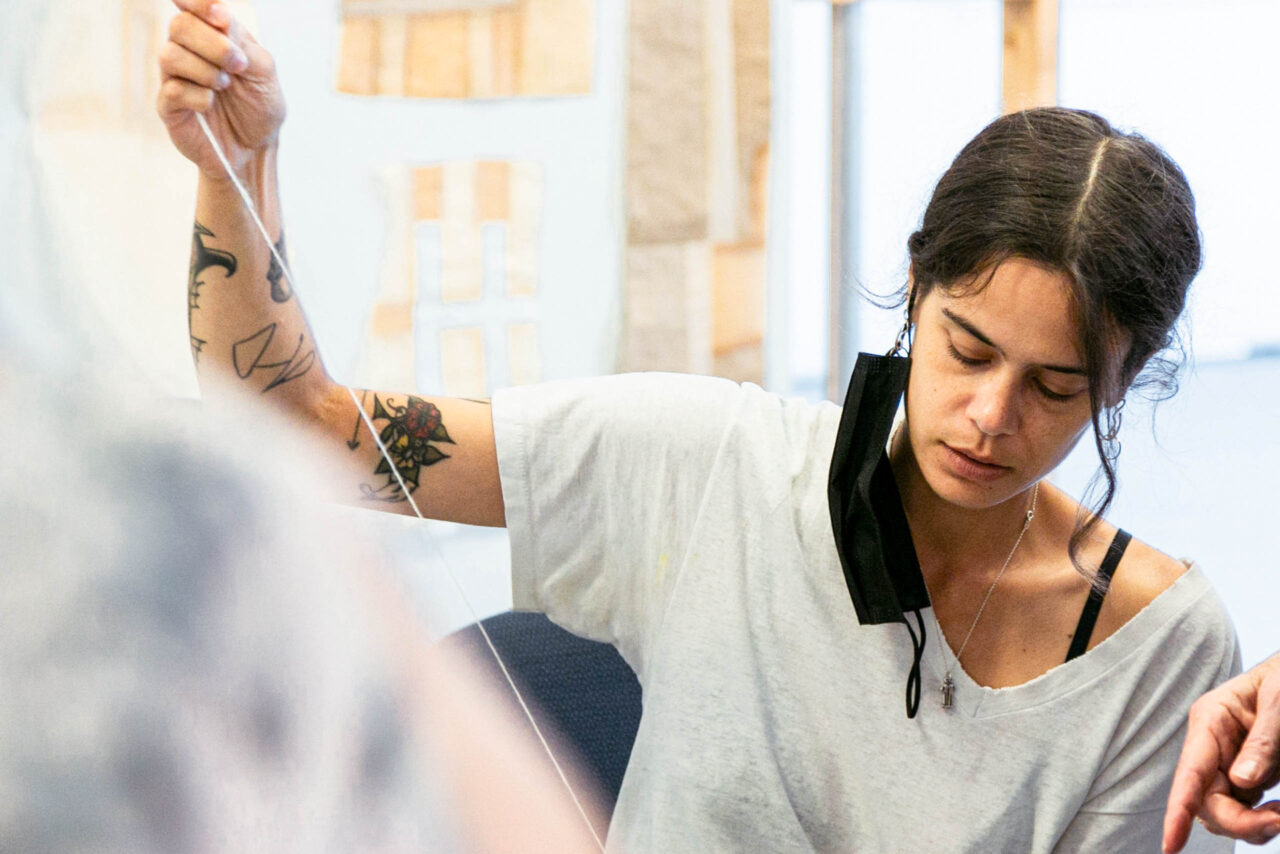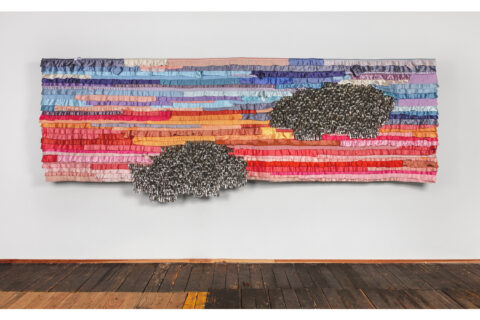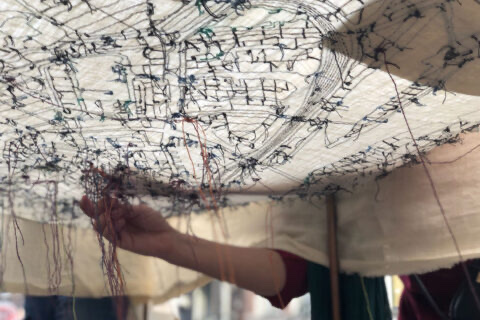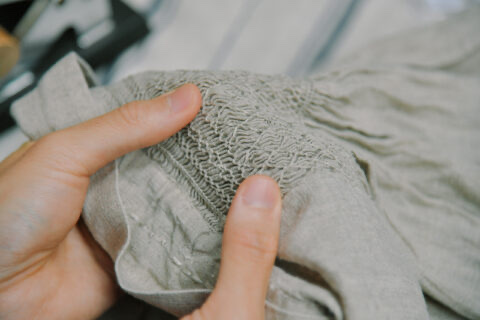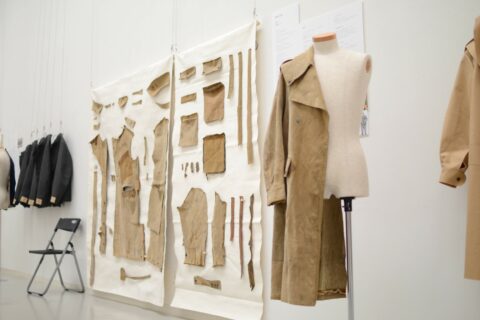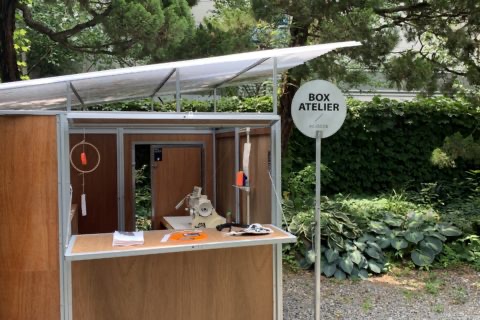「縫補是慢下來了解一件衣服的親密時刻,想像觸摸著它的手和穿著它的身體;總括而言,我發覺縫補是一種力量,教曉我在生活中更能自力更生。」身兼作家、編輯、研究雙生兒的口述歷史學者、縫補師和布藝藝術家的 Rachel Meade Smith 説。
「不要太講求精準,即興一點,隨著破爛引發靈感;好好保存廢料並重用它們,在當中擁抱放慢。」當我問她有什麼縫補的心得時她這樣說。
“A time to be slow, to get to know a garment intimately, to think about the hands that have touched it and the bodies that have worn it. In general, I’ve found repair to be an empowering act, and has taught me to be more self-reliant in life.” Rachel Meade Smith who is a writer, an editor, a novice oral historian who studies twins, repair and textile artist, said.
“Don’t be too precise. Improvise. Let yourself be inspired by the damage. Save your scraps and use them. Embrace the slowness.” This is her response when I asked her what she has learned from mending.
Jared 的冷外套
「我足足花了好幾個星期來完成,開始時我不認為我能夠修補這雙袖子,也不打算這樣做,但之後卻忍不住嘗試了,我即興地創作了一些新穎的鬆緊調節,總算解決了問題,當我完成後便覺得念念不忘。」
Jared’s cardigan:
“I worked on this for many weeks. I didn’t think I’d be able to mend the sleeves and had planned not to, but I couldn’t help but try. I improvised some new tensioning devices and somehow figured it out. I missed this project when I was done.”
Dan 的毛衣
「我把這件毛衣的洞從中間分成兩半進行織補,半邊做紅色半邊做米白色,這件事也花上很長時間,因為破洞很多很多;織補羊絨本來是很美好的,但在扭紋上做織補就是另一番滋味,因為織補的網格總是在眼前消失。」
Dan’s sweater:
“I split the holes in this one down the middle, and darned one half red and the other cream. This project also took a long time—there were many, many holes. Darning cashmere is lovely, darning cable knits is less lovely, since the grid is always disappearing on you.”
Stephanie 的毛衣
「這件毛衣上有一個手掌大的洞,我很快意識到它的面積太大而無法運用織補方法,於是我找來了色樣非常接近的毛線,編織了一個比洞略大的補丁,然後在邊緣周圍織補,對比色的日式刺子繡風格,拼湊出一種奇怪卻又非常獨特的構圖。」
Stephanie’s sweater:
“This had a palm-sized hole in it. I quickly realized it was too big to darn and decided to knit a matching patch instead. I found a very, very close match for the yarn, knit a patch slightly bigger than the hole, then darned around the edges, sashiko style, in contrast colors. It created a weird and very distinctive composition.”
身兼多職的Rachel,和好朋友同是縫補愛好者的Sam ,對可循環和慢速式的生產和消費模式特別感興趣,二人鑽研縫補多年,在 2021 年她們開始每月舉辦織補工作坊,大部分是在線上的,而整個 2022 年,她們就與布魯克林公共圖書館合作策劃,找來紐約各地的縫補達人,在紐約公共圖書館舉辦一系列的實體工作坊。
「我們的 Repair Shop (縫補店)沒有實體店,偶爾會接受委托項目 ,有時我們會合力完成,有時也會各自獨立處理一件作品。」
「我要强調的是,縫補是緩慢的,這也就是當中的美;在其他時間我們都常行動迅速,倒不如開著播客,享受過程吧!當然我們只需15分鐘便足以買到一件全新的,你所擁有的只是一件新的襯衫,或新的毛衣,但通過縫補後,你所擁有的必然是更多。」
「我期望社交媒體平台沒落,潮流週期放緩,人們開始穿著和縫補他們擁有的衣物,並且與他人交換;我祈求縫補不是一種下一季便遭人們拋棄的潮流;我希望看見一個以二手服裝為主流的時尚市場、在紡織品生產上有更好的監管、每間學校都會教授縫補技藝。」
Rachel wears many different hats, she shared a love of mending, specifically darning, and an interest in circular and slow approaches to production and consumption with her good friend Sam. They’ve both been mending for a number of years and started hosting monthly darning workshops in 2021, mostly online. They spent all of 2022 partnering with the Brooklyn Public Library to curate, plan, and produce repair workshops featuring repair experts from across New York, and are currently finishing up an in-person mending series at New York Public Library.
“Our Repair shop doesn’t have a physical store, we occasionally take select commissions—sometimes we both contribute, other times one of us to work on a piece independently.”
“I try to emphasize that yes, repair is slow, and that’s part of the beauty of it. We move so fast the rest of the time. Enjoy the process, put on a podcast. Of course you could go buy something new in 15 minutes, but then you’ll just have a new shirt, a new sweater. When you finish a repair you have a lot more than that.”
“My hope is that the social media platforms tank, the trend cycles slow down, and people start wearing and fixing what they have or swapping with others. I pray that repair isn’t a trend that people throw away next season. In general, I’d love to see a dominant fashion market based on second-hand clothing, better regulations on textile production, and repair skills taught in every school.”
